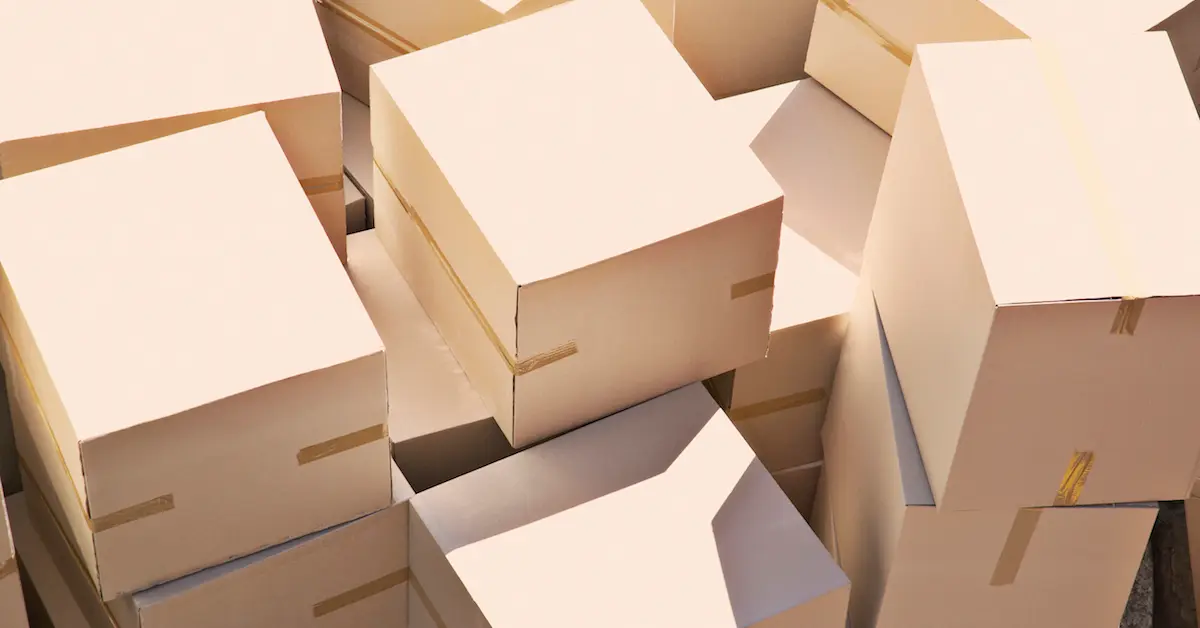Welcome to the Topic “Sustainable Packing Materials: Eco-Friendly Alternatives for a Greener Move”
In our modern world, where environmental concerns are growing rapidly, it’s crucial to make sustainable choices in every aspect of our lives, including moving homes. One often overlooked area is packing materials. Traditional packing materials, such as plastic bubble wrap and Styrofoam, have detrimental effects on the environment due to their non-biodegradable nature. However, there are plenty of eco-friendly alternatives available that can make your move greener and contribute to a more sustainable future.
In this blog, we will explore various sustainable packing materials that you can use for a greener move, ensuring the protection of your belongings while minimizing your carbon footprint.
Recycled Cardboard Boxes
One of the most readily available and eco-friendly options for packing is recycled cardboard boxes. These boxes can be easily obtained from local grocery stores, liquor stores, or online marketplaces. Opting for used or recycled boxes not only reduces waste but also saves energy and resources that would have been consumed in the production of new boxes. Make sure to choose sturdy boxes in good condition, and don’t forget to reuse or recycle them after your move.
Biodegradable Packing Peanuts
Instead of using polystyrene packing peanuts, which are harmful to the environment, consider using biodegradable alternatives. Biodegradable packing peanuts are made from renewable materials, such as cornstarch or wheat starch, and they break down easily in compost or water. They provide excellent cushioning for delicate items and can be reused or disposed of without harming the environment.
Eco-Friendly Bubble Wrap Alternatives
Bubble wrap is a popular packing material due to its cushioning properties, but it poses a significant threat to the environment. Luckily, there are several eco-friendly alternatives available:
a. Air Pillows
Air pillows are lightweight plastic cushions that can be inflated on-site using an air pump. Unlike traditional bubble wrap, they are reusable and can be deflated for easy storage. Look for air pillows made from recyclable materials to reduce their environmental impact.
b. Biodegradable Bubble Wrap
Biodegradable bubble wrap is made from recycled or biodegradable materials, such as recycled polyethylene or plant-based alternatives. It provides the same level of protection for your belongings while being compostable or recyclable.
c. Shredded Paper
Instead of purchasing packing materials, consider using shredded paper from your office or home. Crumpled paper provides a simple yet effective cushioning layer for your items. Remember to use non-glossy paper and avoid using personal documents with sensitive information.
Eco-Packaging Tape
Traditional plastic packaging tape is non-recyclable and adds to the plastic waste problem. Switching to eco-friendly packaging tape is a simple step towards a greener move. Look for tape made from paper or compostable materials, which can be easily recycled or decomposed.
Reusable Fabric Wraps
For fragile items, consider using reusable fabric wraps instead of disposable materials. Old blankets, towels, or clothing can be used to wrap delicate items, providing a protective layer during transportation. Fabric wraps are not only eco-friendly but also cost-effective, as they eliminate the need for additional packing materials.
Biodegradable and Compostable Packing Fillers
To secure your items inside boxes, you may need packing fillers. Instead of using foam peanuts or plastic bubble wrap, opt for eco-friendly alternatives such as shredded cardboard, biodegradable packing paper, or compostable packing peanuts made from natural materials like starch. These options provide a cushioning effect while being gentle on the environment.
Plant-Based Plastics
If you require plastic containers or storage solutions for your move, choose plant-based plastics as an alternative to traditional petroleum-based plastics. These plant-based plastics are made from renewable resources like corn or sugarcane and have a lower carbon footprint. They are also biodegradable or compostable, reducing their impact on the environment.
FAQs
Can I find sustainable packing materials easily?
Yes, sustainable packing materials are becoming more accessible. Recycled cardboard boxes can be obtained from local stores or online marketplaces. Biodegradable packing peanuts, eco-friendly bubble wrap alternatives, and compostable packing fillers are available from eco-conscious packaging suppliers. Additionally, reusable fabric wraps can be sourced from household items like blankets or towels.
Are sustainable packing materials as effective as traditional ones in protecting my belongings?
Yes, sustainable packing materials can be just as effective in protecting your belongings during a move. Recycled cardboard boxes are sturdy and reliable, while biodegradable alternatives to bubble wrap provide cushioning. Reusable fabric wraps offer a protective layer, and eco-friendly packing fillers can secure your items in boxes. By choosing the appropriate materials and using them correctly, you can ensure the safety of your belongings while minimizing environmental impact.
How do I dispose of sustainable packing materials after the move?
The disposal methods for sustainable packing materials depend on the specific material used. Recycled cardboard boxes can be reused for storage or recycled. Biodegradable packing peanuts and compostable packing fillers can be added to your compost pile or disposed of with organic waste. Eco-friendly bubble wrap alternatives can be recycled or composted based on the material. It’s important to check local recycling and composting guidelines to ensure proper disposal.
Are sustainable packing materials more expensive than traditional ones?
In some cases, sustainable packing materials may have a slightly higher upfront cost compared to traditional options. However, considering their eco-friendly benefits and potential for reuse, they often provide long-term cost savings. Additionally, the price difference is gradually decreasing as sustainable options become more mainstream. Exploring local stores, online marketplaces, or bulk buying options can help you find affordable sustainable packing materials.
Can I mix sustainable packing materials with traditional ones?
While the goal is to minimize the use of traditional packing materials, it’s understandable that you may have some on hand. In such cases, it’s best to prioritize the use of sustainable materials as much as possible and only resort to traditional options when necessary. By consciously reducing your reliance on non-eco-friendly materials, you can still make a positive impact. Remember to properly dispose of any traditional materials and recycle or reuse them whenever possible.
Conclusion
When planning your next move, remember that every small decision can contribute to a greener and more sustainable future. By choosing eco-friendly packing materials, such as recycled cardboard boxes, biodegradable alternatives to bubble wrap, reusable fabric wraps, and compostable packing fillers, you can minimize waste and reduce your carbon footprint. Let’s make conscious choices and adopt sustainable practices during our moves, showing our commitment to protecting the environment and preserving it for future generations.
Also Read: The best tips for a cost-efficient move


